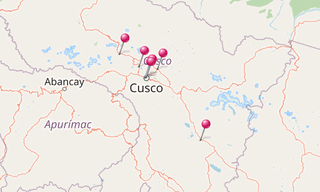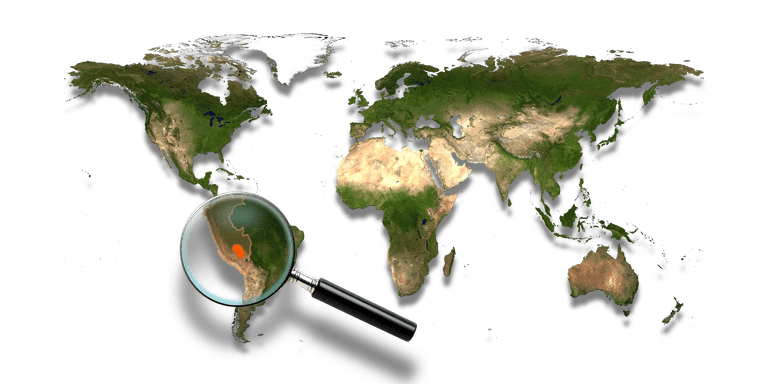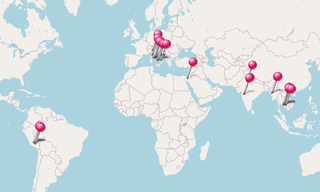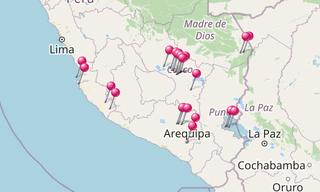The Incas built a main access route along the Urubamba Valley, connecting the site of Machu Picchu in the west and to Pisac in the east.
Chinchero
Chinchero was the place chosen by the Inca Túpac Inca Yupanqui to establish his residence. He ordered the construction of beautiful palaces for his personal use and that of his panaca. Around 1536, in the middle of the invasion, Manco Inca started his rebellion by setting fire to Chinchero so that the Spanish would not renew their supplies and stop pursuing him in his retreat to unknown jungle regions. In the church from the colonial era, the foundations of which date back to the Inca era, mass is held to this day in the indigenous Quechua language.
Ollantaytambo
Around the mid-15th century, the Inca emperor Pachacuti Inca Yupanqui (Pachacútec) conquered and razed Ollantaytambo; the town and the nearby region were incorporated into his personal estate. The emperor rebuilt the town with sumptuous constructions and undertook extensive works of terracing and irrigation in the Urubamba Valley; the town provided lodging for the Inca nobility, while the terraces were farmed by yanakuna, retainers of the emperor. At the time of the Spanish conquest of Peru, it served as a stronghold for Manco Inca Yupanqui, leader of the Inca resistance.
Pisac
The Inca complex at Pisac is a large Incan complex of agricultural terraces, residences, guard posts, watchtowers and a ceremonial/religious centre located along a mountain ridge in the Sacred Valley of Peru. The complex that remains today was built by the Inca emperor Pachacuti no earlier than 1440. It stretches at varying elevations between 3,446 and 3,514 m above sea level for approximately one kilometre.
Puka Pukara
Puka Pukara (“red fortress”) is a site of military ruins near Cusco. This fort is made of large walls, terraces, and staircases and was part of defense of Cusco in particular and the Inca Empire in general. The site was probably constructed during the reign of Pachacuti.
Qenko
Qenko is an archaeological site in the Sacred Valley of Peru located about 6 km north east of Cusco. It is one of the largest huacas (holy places) in the Cusco Region. Many huacas were based on naturally occurring rock formations. It was believed to be a place where sacrifices and mummification took place.
Raqch’i
Raqch’i is an Inca archaeological site in Peru located in the Cusco Region. It is 3,480 m above sea level and 110 km from the city of Cusco. The Inca site at Raqch’i was a primary control point on a road system that originated in Cusco and expanded as the Inca empire grew.
It is located in a valley known for sacred sites. Most of the Inca structures are enclosed by a 4 km-long perimeter wall. The most prominent structure is the Temple of Wiracocha, an enormous rectangular two-story roofed structure that measures 92 m by 25.5 m.
Sacsayhuamán
The complex was built by the Inca in the 15th century, particularly under Pachacuti and successors. They built dry stone walls constructed of huge stones. The workers carefully cut the boulders to fit them together tightly without mortar. The site is at an altitude of 3,701 m.
The stones used in the construction of these terraces are among the largest used in any building in pre-Hispanic America. They display a precision of cutting and fitting that is unmatched in the Americas. The stones are so closely spaced that a single piece of paper will not fit between many of the stones.
The longest of the three walls is about 400 m.
Tambomachay
Tambomachay is an archaeological site associated with the Inca Empire, consisting of a series of aqueducts, canals and waterfalls that run through the terraced rocks. It could have served a religious function since sacred water fountains were found in almost all of major Incan temple.

-Inca-Ruins.hero.landscape.jpg?w=1600)


-Templo-de-Viracocha.jpg?w=256)
-Inca-Fortress-Walls.jpg?w=256)
-Inca-Fortress-Walls.jpg?w=256)
.jpg?w=256)
-Pinkuylluna-Ruins.jpg?w=256)
.jpg?w=256)
-Nuestra-Senora-de-la-Natividad-Church.jpg?w=256)
-Inca-Ruins.jpg?w=256)
-Inca-Fortress-Walls.jpg?w=256)
-Pinkuylluna-Ruins.jpg?w=256)
.jpg?w=256)
-Inca-Fortress-Walls.jpg?w=256)
.jpg?w=256)
.jpg?w=256)
-Pinkuylluna-Ruins.jpg?w=256)
-Nuestra-Senora-de-la-Natividad-Church.jpg?w=256)
.jpg?w=256)
-Pinkuylluna-Ruins.jpg?w=256)
.jpg?w=256)
-Inca-Ruins.jpg?w=256)
-Templo-de-Viracocha.jpg?w=256)
.jpg?w=256)
-Inca-Fortress-Walls.jpg?w=256)
-Inca-Ruins.jpg?w=256)
.jpg?w=256)
.jpg?w=256)
-Templo-de-Viracocha.jpg?w=256)
-Pinkuylluna-Ruins.jpg?w=256)
-Inca-Ruins.jpg?w=256)
-Inca-Ruins.jpg?w=256)
-Inca-Fortress-Walls.jpg?w=256)
-Templo-de-Viracocha.jpg?w=256)
.jpg?w=256)
.jpg?w=256)
.jpg?w=256)
.jpg?w=256)
-Underground-Shrine.jpg?w=256)
.jpg?w=256)
-Pinkuylluna-Ruins.jpg?w=256)
-Inca-Fortress-Walls.jpg?w=256)
-Inca-Ruins.jpg?w=256)
.jpg?w=256)
-Pinkuylluna-Ruins.jpg?w=256)
.jpg?w=256)
.jpg?w=256)
.jpg?w=256)
.jpg?w=256)
.jpg?w=256)
-Inca-Ruins.jpg?w=256)
-Inca-Fortress-Walls.jpg?w=256)
-Pinkuylluna-Ruins.jpg?w=256)
-Inca-Fortress-Walls.jpg?w=256)
.jpg?w=256)
.jpg?w=256)
-Inca-Ruins.jpg?w=256)
-Inca-Fortress-Walls.jpg?w=256)
-Templo-de-Viracocha.jpg?w=256)
-Templo-de-Viracocha.jpg?w=256)
-Inca-Fortress-Walls.jpg?w=256)
.jpg?w=256)
.hero.jpg?w=320)

.hero.jpg?w=320)
